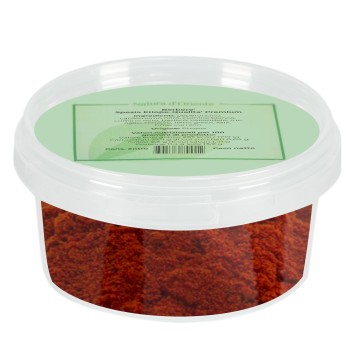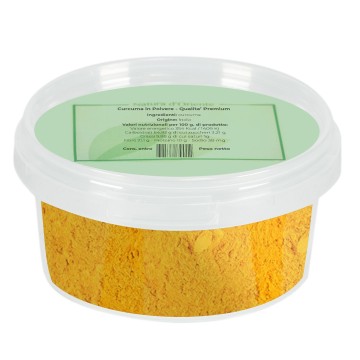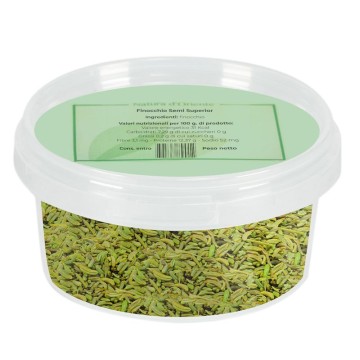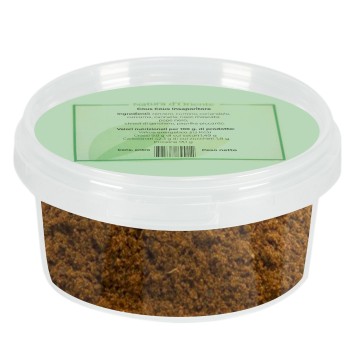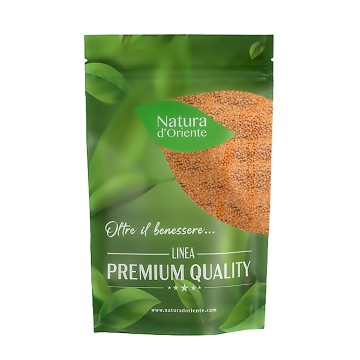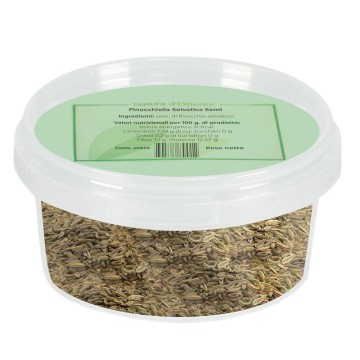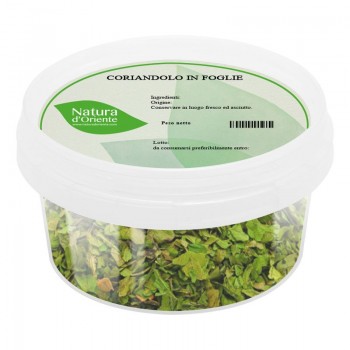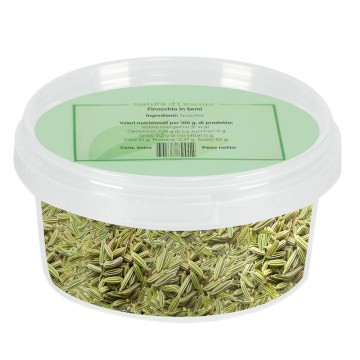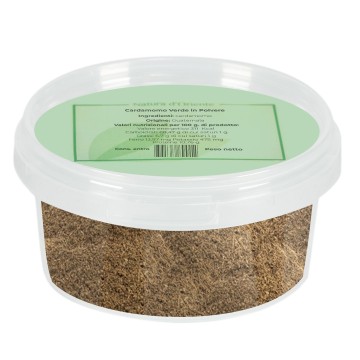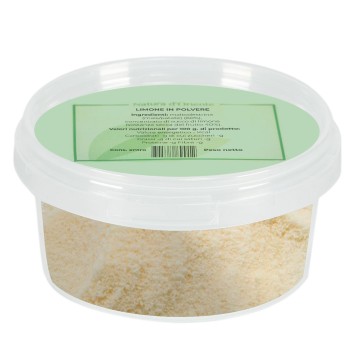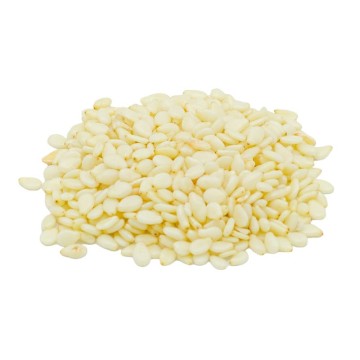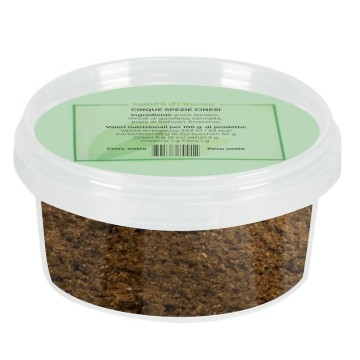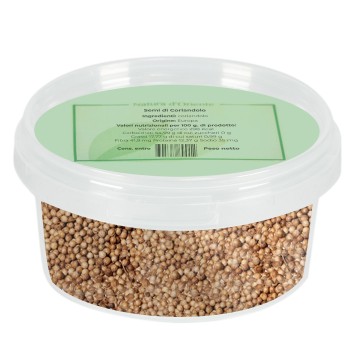This small fruit earned the title of the hottest chili pepper in the world in November 2013 and is still one of the most pungent and fearsome of all. In a very short time and thanks to word of mouth, it has become a “must” for those who want to have an exceptionally hot chili pepper in their spice pantry. Ideal for adding intense heat to your favorite dishes, carefully measuring out a pinch of Carolina Reaper - it's more than enough!
What are the properties of the Carolina Reaper chili pepper?
It displays special qualities in terms of taste and aroma, with a now famous super spicy effect. This chili pepper is renowned for its intense heat but, although the Carolina Reaper deserves its “fiery” reputation, it also displays an unexpected sweetness in its flavor, slightly fruity. An effect that gives a sensation of sweetness to the palate, before the extreme heat sets in.
How hot is the Carolina Reaper?
This chili pepper holds the 2017 Guinness World Record for one of the hottest on the planet. It boasts a spiciness that, measured by the laboratories of Winthrop University in South Carolina, reached the value of 1,569,000 in the Scoville Heat Unit (SHU). In some tests it even reached the threshold of 2,200,000 SHU! This means that it can develop an exceptional average heat of over 1.5 million on the Scoville scale, surpassing the record holder, the Trinidad Moruga Scorpion chili pepper (average of 1,400,000 SHU). For comparison, you can think of a jalapeno chili pepper, which has an average of around 5,000 SHU and a local chili pepper measures on average from 30,000 – 50,000 SHU. The Scoville scale is the official measure of the heat level of chili peppers. It measures spiciness in Scoville heat units, or SHU, which are based on the concentration of capsaicin and other capsaicinoids, the irritating chemicals that give chili peppers their heat. These compounds also have benefits for our well-being, as capsaicin and other compounds aid digestion, blood circulation, and the regular functioning of the cardiovascular system. Chili peppers also have antioxidant and metabolism-boosting properties. In any case, the doses of Carolina Reaper must be very minimal, so the benefits of capsaicin can be better exploited through other types of chili peppers.
Carolina Reaper chili pepper, here are the contraindications
WARNING USE WITH CAUTION! Even when handling this super-hot chili pepper, it is necessary to wear gloves and protection for the skin, eyes, and mucous membranes. The substances in chili peppers can cause external irritation, especially if you have sensitive skin. Be careful with ground Carolina Reaper powder, especially when it comes into contact with hot water. To be safe, do not touch your eyes or mouth (avoid any accidental contact with sensitive areas) and wash your hands after handling Carolina Reaper peppers. Also, open windows to disperse capsaicin particles into the air, reducing the risk of inhaling them and incurring respiratory irritation. In dishes, it is essential not to exceed the doses, since these peppers can have serious side effects. The burning sensation can spread to the mouth or lips, like heartburn, and is therefore not recommended for people with ulcers, gastritis and gastroenteritis, gastroesophageal reflux, diverticulitis, irritable bowel syndrome, Crohn's disease, hemorrhoids. Its high heat is not recommended for feeding children, pregnant women and breastfeeding women.
How to buy our Carolina Reaper
This is a particular spice, not always easy to buy. If you have difficulty finding this spice and want a quality chili pepper, our online store offers it in various freshness-saving packages.
For those looking for where to buy Carolina Reaper chili pepper, you can find it among the fine spices on sale and delivered throughout Italy.
Our proposal for Carolina Reaper powder is a 10 gram glass package, which you can buy in 1 or 2 pieces. On Natura d'Oriente you will find an excellent price for this chili pepper and other loose oriental spices.
How to use Carolina Reaper chili pepper powder
Without being scared by its extreme spiciness, with the right techniques and combinations you can exploit the power of Carolina Reaper to create appetizing dishes. This chili powder brings a bold and unforgettable heat to the table, but the important thing is to use it in moderation.
To tone down its intensity a little, Carolina Reapers can be paired with some ingredients that reduce the heat level, without sacrificing thetheir unique flavor. These are dairy products such as milk, yogurt or soft cheeses, which help neutralize capsaicin. Other ingredients that help mitigate spiciness are sugar and sweeteners such as honey or maple syrup: they bind to capsaicin molecules, reducing their impact on the palate. Finally, acidic ingredients such as vinegar, lemon juice or citrus juice help break down the capsaicin and create a refreshing contrast.
What to cook with the Carolina Reaper?
Savory recipes: the Carolina Reaper can be used for a simple dish of spaghetti "aglio, olio e peperoncino", in recipes for penne all'arrabbiata or pollo alla diavola. It is useful for intensely flavoring soups, stews or exotic dishes such as Mexican chili and Indian or Thai curries. The initial sweetness allows the experience of the flavor that changes to spicy, as you eat. This ground chili pepper is also used to sprinkle on grilled vegetables and as an addition to firm and crunchy ingredients (toasted nuts, garlic, onions).
Flavoring: the pleasantly fruity scent makes the Carolina Reaper suitable for making extra-spicy preserves, for use in jellies and jams (strawberry in particular). A balance between sweet and spicy, which is involved in the flavoring of cheeses, toast, desserts. The powdered version of Carolina Reaper can be infused in vinegar or in the preparation of spicy olive oil, infusing the liquid with intense heat and flavor. These oils or vinegars are great to use as a spicy touch in dressings, marinades and creative recipes.
Sauces: For those who love spicy sauces, a small amount of Carolina Reaper can be used to create decidedly pungent recipes; especially with sauces with a slightly smoky flavor. Carolina Reaper sauces are the perfect accompaniment to chips, tacos or grilled meats, sandwiches, pizzas and focaccias.
Sauces: It becomes a fiery element in tomato sauces, excellent in addition to a sauce of fresh cherry tomatoes and basil sautéed in a pan.
Meat: Carolina Reaper powder can be used in very small quantities as a dry rub on grilled, barbecued or barbecued meats. It can be used sparingly in the preparation of dried meats, sausages or cured meats (one of the most common uses of the Carolina Reaper is in the creation of sausages).
For spicy marinades typical of American barbecue, mix the Carolina Reaper powder with liquid ingredients such as lemon juice, soy sauce, garlic and honey. Let the meats marinate for a few hours or overnight. The marinade will tenderize the meat, infusing it with bold flavors and the heat of the Carolina Reaper.
You can also dry rub the meat, and often create “rubs” that include ground Carolina Reaper and a blend of herbs, spices and salt. The rub is applied to meats such as pork, chicken or beef, before grilling or roasting. The rub or marinade infuses the meat with intense heat, creating a tasty dish.
Desserts: Culinary uses for Carolina Reaper peppers include spicy chocolate desserts, which are great when combined with dark chocolate and chili peppers for a unique experience of sweetness and spiciness. Another popular dessert is a Carolina Reaper chocolate truffle, which adds a burst of heat to a soft dessert. The pepper can be incorporated into the dough of cupcakes or chocolate ganache for creative ice creams and sorbets. It pairs well with the sweetness of tropical fruits such as pineapple or mango, which contrast nicely with the heat of the pepper. It is advisable to keep a glass of milk on hand to cool the heat on the palate if it feels too much.
International cuisine: Carolina Reaper peppers are very popular in Mexican cuisine, especially in hot sauces combined with tomatoes, onions, garlic and cilantro. These sauces are popular on tacos, enchiladas or other spicy Mexican and Tex-Mex dishes.
In Indian cuisine, they are used in curries, mixed with aromatic spices such as cumin, coriander and turmeric. They are also used in local chutneys and pickles, along with pungent ingredients such as tamarind, vinegar and lime. These spicy condiments are the accompaniment to snacks such as samosas or pakoras, and other Indian street food dishes. A similar flavour path takes place in Thai cuisine, where Carolina Reapers add a strong kick to dishes such as curries, stir-fries and soups – such as the famous Tom Yum soup (prawns, mushrooms and herbs). They are combined with Thai ingredients such as lemongrass, galangal and kaffir lime leaves; in Thai sauces with shallots, garlic and prawn paste. InCaribbean cuisine, Carolina Reaper peppers bring their fiery heat to the tropical flavors of stews, marinades, and hot sauces like Jerk or Scotch Bonnet sauce – perfect for roast chicken, grilled fish, rice, and beans.
The Recipe: Carolina Reaper Chili Sauce
Ingredients:
4 large fresh tomatoes - 1/2 cup fresh cilantro leaves - 1/2 tablespoon Carolina Reaper powder - 1/2 onion (diced) - 2 cloves garlic - Juice of 1 fresh lime - 1 teaspoon sugar - 1/2 teaspoon cumin - 1/2 teaspoon coarse sea salt Directions
Put everything except the onions in a food processor or blender and process. Use tomatoes that are not too watery to puree the sauce.
Add the onions at the end and blend for just a second, so that the onions remain in small pieces. Pour the sauce into a sterilized glass jar or plastic container. Refrigerate for over an hour, to allow the aromas of the spices to develop. Store the sauce in the refrigerator.
Where does the Carolina Reaper come from?
The Carolina Reaper comes from the plant species Capsicum chinense, unlike other chili peppers that come from Capsicum annuum. Both are part of the 5 main species of the Capsicum genus, but the chinense includes the hottest chili peppers of all, such as the Habanero and the Scotch Bonnet. The Carolina Reaper is a chili pepper that actually comes from a hybrid plant born from the union of two species of very hot chili peppers, the Pakistani Naga Morich and the Red Habanero. Its origin is due to Ed Currie, a grower from Carolina (the US state) and owner of the Puckerbutt Pepper Company. After several attempts, in 2011 he crossed the two varieties Habanero La Soufrière (Saint Vincent) and a Naga (Pakistan), giving life to this new species, also initially known by the name HP22B. In 2013, in his greenhouse in South Carolina, seven generations of this plant had already grown. It looks like a small, red chili pepper, with one end that resembles a scorpion's tail, approximately 3 to 5 centimeters long. Its name, in fact, comes from the small, pointed tail, which is somewhat reminiscent of the Great Reaper's scythe (Carolina Reaper means Carolina Reaper).
Also in 2011, a radio reporter accidentally ate a piece and was shocked by its truly extreme spiciness. He defined the aftertaste almost as a physical pain, unable to quantify the degree of spiciness, and dedicated a service to it. In a short time it was analyzed in terms of spiciness, and was awarded the title of the hottest chili pepper in the world, entering the GUINNESS WORLD RECORDS in August 2017. Before the Carolina Reaper, the record was held by the Trinidad Scorpion, originally from Trinidad and Tobago, known as "Butch T".
To date, the Carolina Reaper has been joined and surpassed in extreme spiciness by the Dragon's Breath, developed by the Welshman Mike Smith (in the laboratories of Nottingham Trent University, it reached 2.4 million SHU) and by another creature of Ed Currie, the producer of the Carolina Reaper, with his Pepper X (claims that it reaches 3.18 million SHU).



 No reward points for this product.
No reward points for this product.
